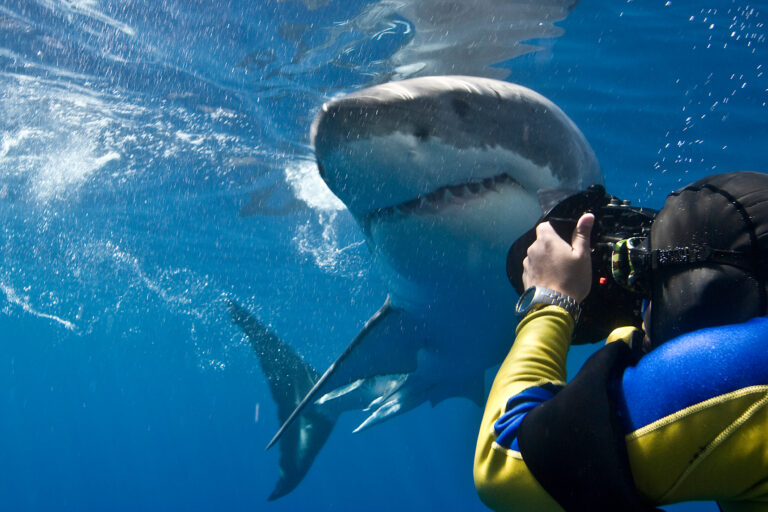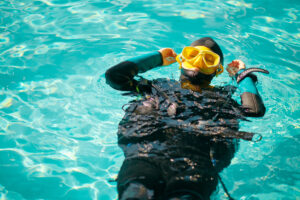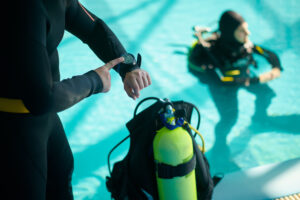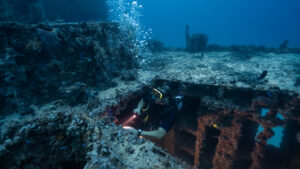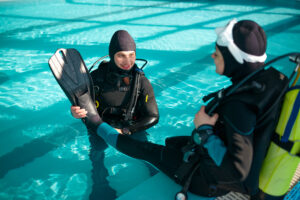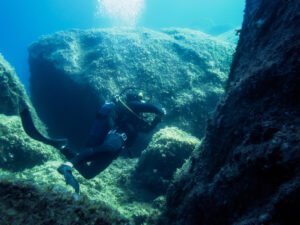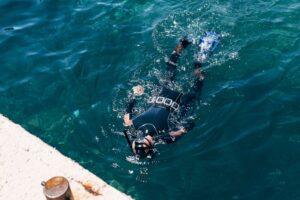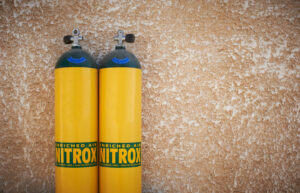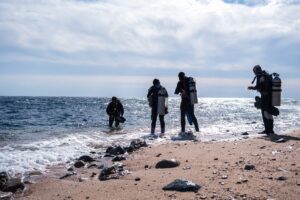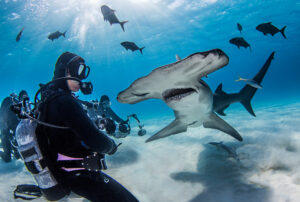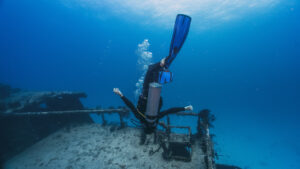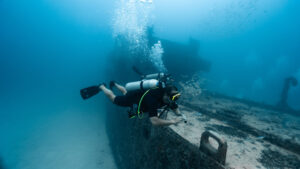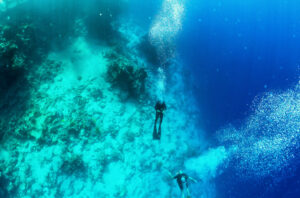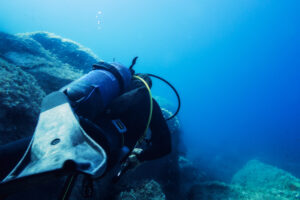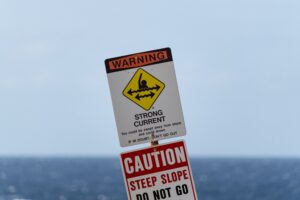What is a Dropping Tide?
A dropping tide, also known as an ebb tide, refers to the phase when the tide level is receding from high tide to low tide. This process is a crucial aspect of tidal cycles, driven by the gravitational forces of the moon and the sun, affecting the movement of water across coastal areas. Understanding the characteristics and effects of a dropping tide is essential for various maritime activities, particularly scuba diving, as it influences water conditions, marine life behavior, and underwater navigation.
Understanding Tides
Tides are the rhythmic rising and falling of sea levels caused primarily by the gravitational forces exerted by the moon and the sun, coupled with the rotation of the Earth. This cyclical phenomenon results in two high tides and two low tides within a roughly 24-hour period. The gravitational pull of the moon has a more significant effect than that of the sun due to its proximity to Earth. As the Earth rotates, different areas of the planet experience these tidal changes, creating a predictable pattern.
Spring tides and neap tides are two key types of tidal cycles. Spring tides occur when the Earth, moon, and sun are aligned, either during a new moon or a full moon. This alignment results in the most significant difference between high and low tides, known as the tidal range. In contrast, neap tides occur when the moon and sun are at right angles relative to the Earth, during the first and third quarters of the moon. Neap tides produce the smallest tidal ranges.
Tide tables and charts are vital tools for predicting the timing and magnitude of tides. These resources provide critical information for coastal activities, including scuba diving. Divers rely on accurate tide predictions to plan their dives, ensuring safety and optimal conditions underwater. By understanding the mechanics of tides, divers can anticipate the changes in water levels and currents that will affect their underwater experience.
Characteristics of a Dropping Tide
During a dropping tide, the water level gradually decreases from its peak at high tide to its lowest point at low tide. This transition period is characterized by several notable changes in the marine environment. As the tide recedes, water flows away from the shore, creating currents that can be both strong and variable. These currents are influenced by the underwater topography and the shape of the coastline, making each dropping tide unique in its behavior.
The cycle of water movement during a dropping tide is essential for understanding how it impacts diving conditions. As the tide goes out, the water level decreases, which can expose previously submerged areas. This change can significantly affect the visibility and accessibility of dive sites. In some locations, the dropping tide can reveal underwater features such as reefs, rock formations, and marine habitats that are otherwise hidden during high tide.
Temperature changes can also occur during a dropping tide. The movement of water can mix layers of water with different temperatures, affecting the overall thermal conditions of the dive site. Divers need to be aware of these changes, as they can influence both the comfort and safety of the dive. Additionally, the lowering water levels can affect buoyancy, requiring divers to adjust their equipment and techniques accordingly.
Effects on Marine Life and Environment
The dropping tide has a profound impact on marine life and their environments. As water levels decrease, the distribution and behavior of marine organisms change significantly. Many species have adapted to these tidal fluctuations and have developed unique behaviors to cope with the changing conditions.
Some species thrive during dropping tides due to the increased availability of food resources. For instance, certain fish and invertebrates take advantage of the exposed intertidal zones to feed on organisms that are usually hidden under the water. Predatory species often follow these foraging creatures, creating dynamic interactions within the ecosystem. Divers can witness these behaviors firsthand, providing a fascinating glimpse into the adaptability of marine life.
However, the dropping tide can also pose challenges for some marine organisms. Species that rely on specific water depths and conditions may experience stress or displacement during the receding tide. For example, certain coral species can be exposed to air and sunlight, causing desiccation and potential damage. Divers should be mindful of these sensitive habitats and avoid disturbing the marine life that depends on them.
The underwater landscape is also transformed by the dropping tide. Features such as tidal pools, sandbars, and rock formations become more prominent, offering unique habitats for various species. These areas can be hotspots for biodiversity, attracting a wide range of marine life. Divers exploring these environments during a dropping tide can encounter diverse communities of organisms, each adapted to the changing conditions.
Scuba Diving Considerations During Dropping Tides
Diving during a dropping tide presents unique challenges and opportunities. Safety considerations are paramount, as the changing water levels and currents can create hazardous conditions. Divers must be vigilant and plan their dives carefully to avoid potential risks associated with the receding tide.
One of the primary challenges of diving during a dropping tide is managing the currents. As water flows away from the shore, currents can become strong and unpredictable. Divers need to be aware of these currents and adjust their dive plans accordingly. Experienced divers often use natural features such as reefs and rocks to shelter from the currents and navigate more safely. Additionally, divers should always carry a surface marker buoy to signal their position to boats and other divers.
Visibility can also be affected by a dropping tide. The movement of water can stir up sediment and reduce clarity, making it more challenging to see underwater. Divers may need to rely on their instruments and dive lights to navigate effectively. Planning dives around slack tide, the period between high and low tides when currents are minimal, can help mitigate these visibility issues.
Entry and exit strategies are crucial when diving during a dropping tide. As water levels decrease, access points such as beaches, piers, and boat ramps can become more challenging to navigate. Divers should be prepared for longer walks or swims to reach their dive sites. In some cases, using boats for entry and exit may be more practical. Divers should also be aware of the tide schedule to avoid being stranded by the receding water.
Navigational and Operational Challenges
Underwater navigation during a dropping tide requires careful planning and attention to detail. The changing water levels and currents can affect buoyancy, making it essential for divers to adjust their techniques and equipment accordingly. Proper weighting and buoyancy control are critical to maintaining stability and conserving air.
Buoyancy can be particularly challenging during a dropping tide due to the fluctuating water levels. Divers must continuously monitor their depth and adjust their buoyancy to maintain a safe and comfortable position. This process may involve adding or releasing air from the buoyancy control device (BCD) and adjusting the amount of weight carried. Proper buoyancy control not only enhances safety but also reduces the impact on the marine environment by preventing accidental contact with the sea floor or coral reefs.
Visibility changes are another significant challenge during a dropping tide. As the tide recedes, sediments and particles can be stirred up, reducing underwater visibility. Divers should be prepared for varying visibility conditions and use their dive lights and compasses to navigate effectively. Staying close to the dive buddy and maintaining good communication can also help manage these challenges.
Equipment considerations are essential for diving during a dropping tide. Divers should ensure their gear is in optimal condition and suitable for the specific conditions of the dive. This includes checking the functionality of dive computers, compasses, and dive lights. Additionally, carrying a surface marker buoy is crucial for signaling the diver’s position to boats and other divers, especially in areas with strong currents or low visibility.
Key Takeaways
Understanding the dynamics of a dropping tide is crucial for safe and enjoyable scuba diving. This phase of the tidal cycle significantly influences water conditions, marine life behavior, and underwater navigation. By planning dives carefully and being aware of the challenges posed by dropping tides, divers can enhance their safety and experience the unique underwater environments created by these natural phenomena.

